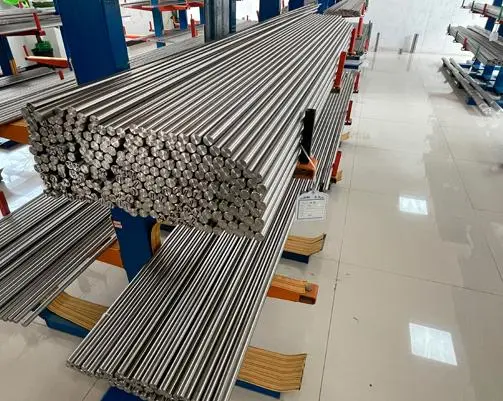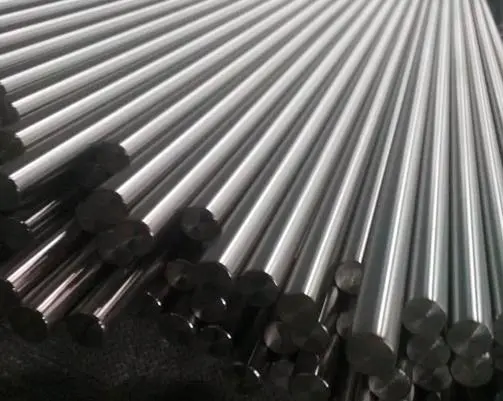α Alloys contain a certain amount of elements that stabilize the α phase, and in equilibrium, they mainly consist of the α phase. α Alloys have a low specific weight, good heat resistance, excellent weldability, and superior corrosion resistance. However, their disadvantage is low room temperature strength. They are typically used as heat-resistant and corrosion-resistant materials. α Alloys can be further classified into fully α alloys, near-α alloys, and α alloys containing a small amount of compounds.
GR1, GR2, GR3, GR5, GR7, GR12
Hot Working Condition (R)
Cold Working Condition (Y)
Annealed Condition (M)
Solution Treated Condition (ST)

Hot Forging → Hot Rolling → Turned (Polished)
ASTM B348, ASTM F136, ASTM F67, AMS4928
Titanium alloys can be classified into three categories based on their phase composition: α alloys, (α+β) alloys, and β alloys, which are represented by TA, TC, and TB in China, respectively.

α Alloys contain a certain amount of elements that stabilize the α phase, and in equilibrium, they mainly consist of the α phase. α Alloys have a low specific weight, good heat resistance, excellent weldability, and superior corrosion resistance, but low room temperature strength. They are typically used as heat-resistant and corrosion-resistant materials. α Alloys can be further divided into fully α alloys (TA7), near-α alloys (Ti-8Al-1Mo-1V), and α alloys with a small number of compounds (Ti-2.5Cu).
(α+β) Alloys contain a certain amount of elements that stabilize both the α phase and the β phase, and in equilibrium, the alloy's structure consists of both α and β phases. (α+β) alloys have moderate strength and can be heat-treated for strengthening, but their weldability is relatively poor. (α+β) alloys are widely used, with the Ti-6Al-4V alloy accounting for more than half of the total titanium material production.
β Alloys contain a large amount of elements that stabilize the β phase, allowing the high-temperature β phase to be retained entirely at room temperature. β Alloys can be further classified into heat-treatable β alloys (metastable β alloys and near-metastable β alloys) and thermally stable β alloys. Heat-treatable β alloys have excellent ductility in the quenched state and can achieve tensile strength of 130-140 kgf/mm² through aging treatment. β Alloys are usually used as high-strength, high-toughness materials. However, they have disadvantages such as high specific weight, high cost, poor weldability, and difficulty in machining.